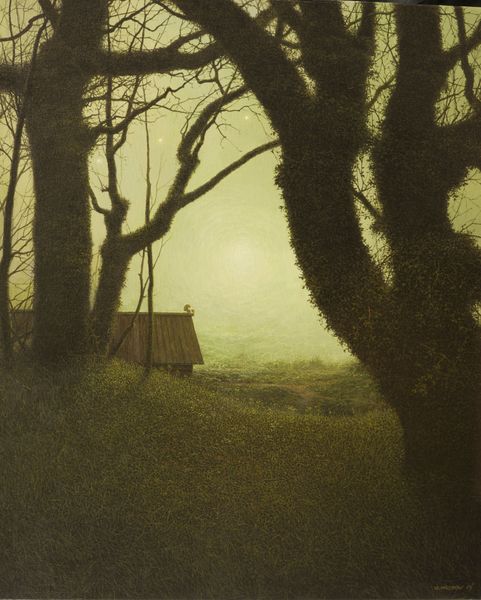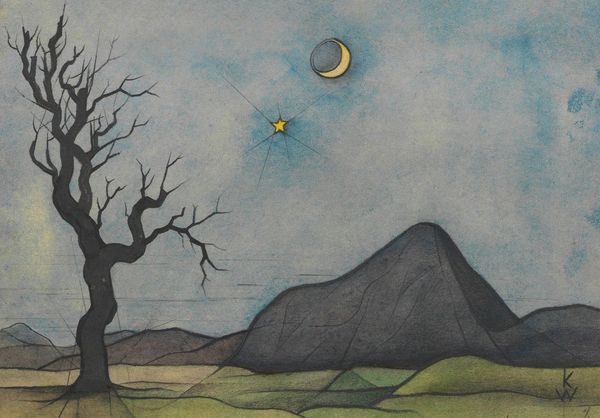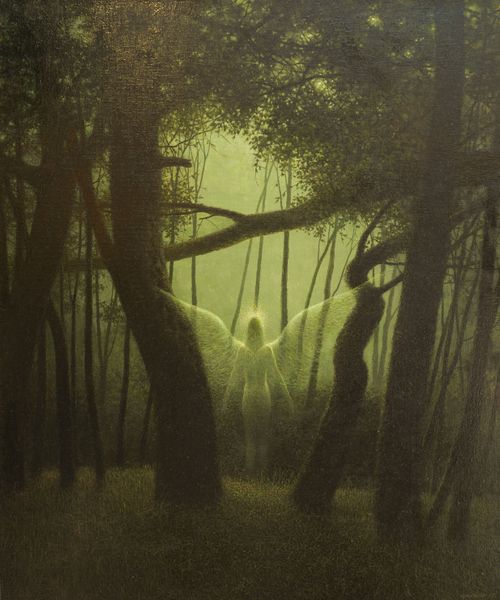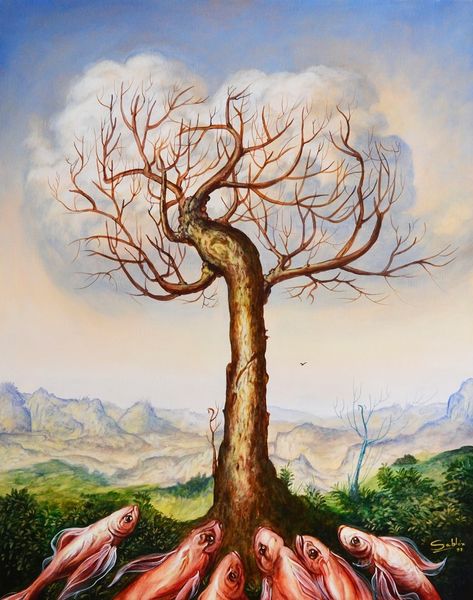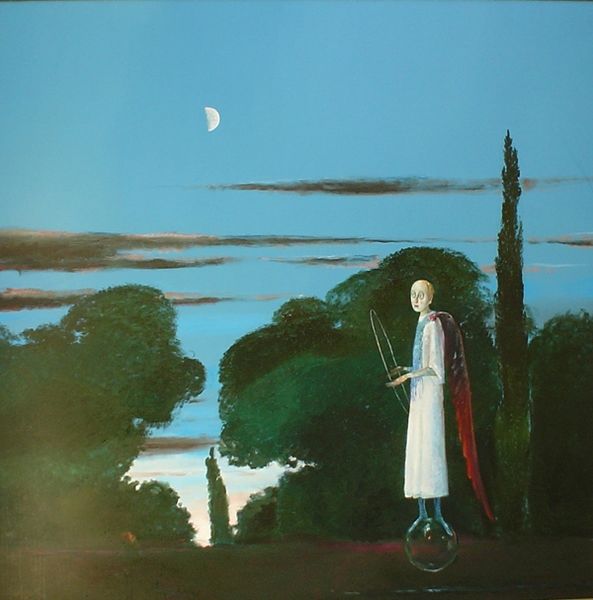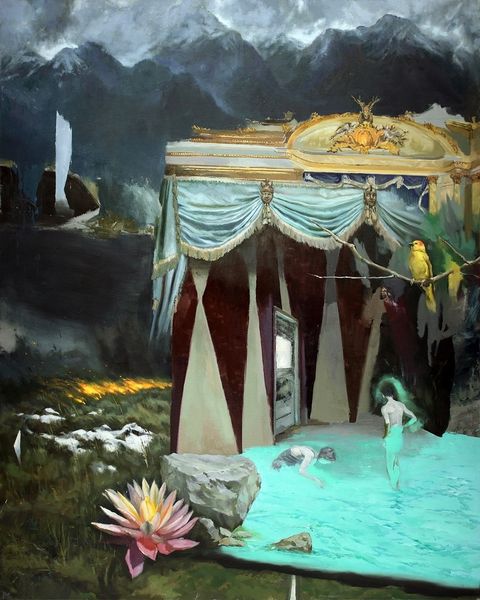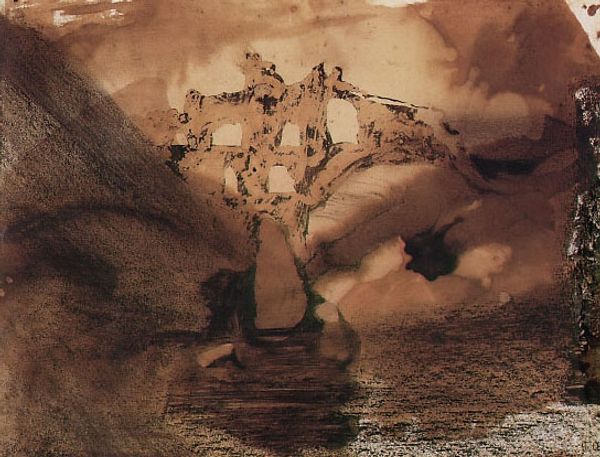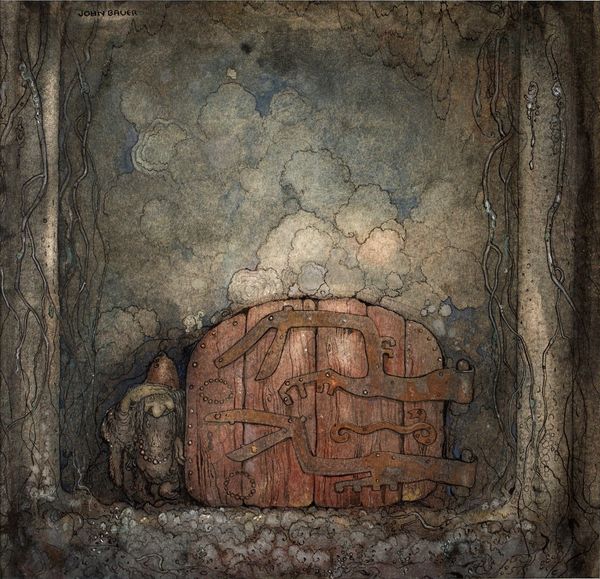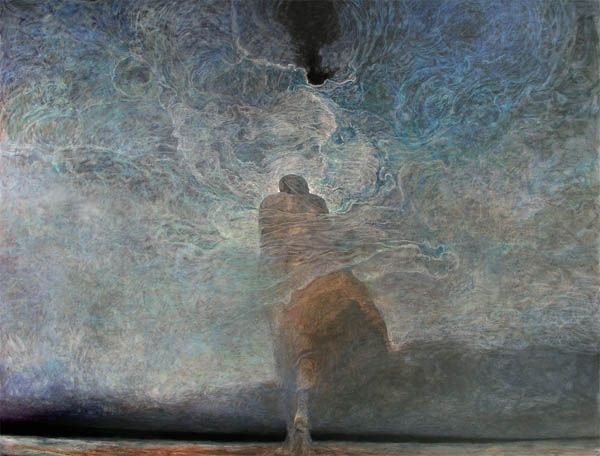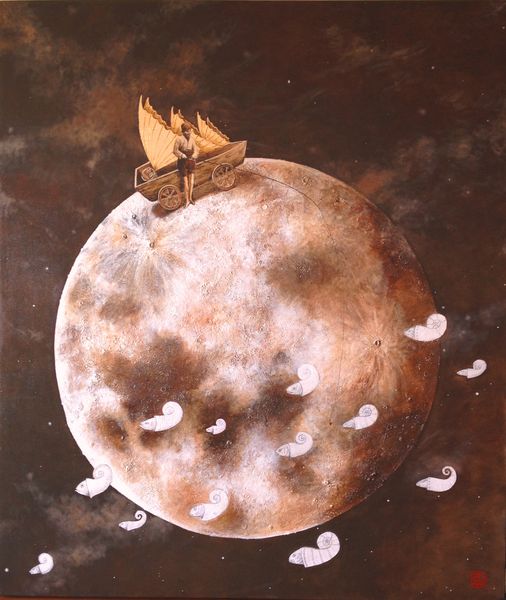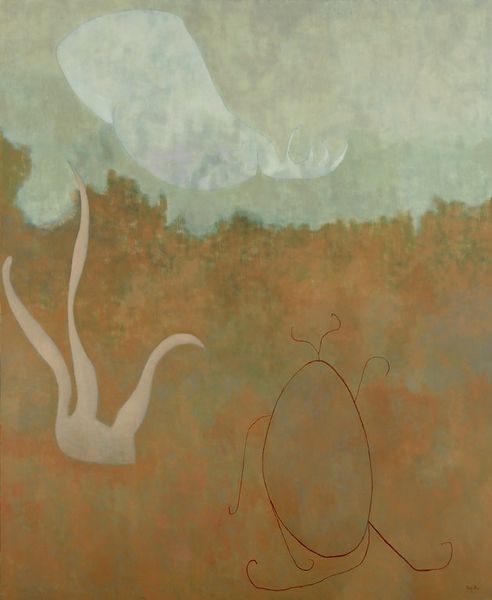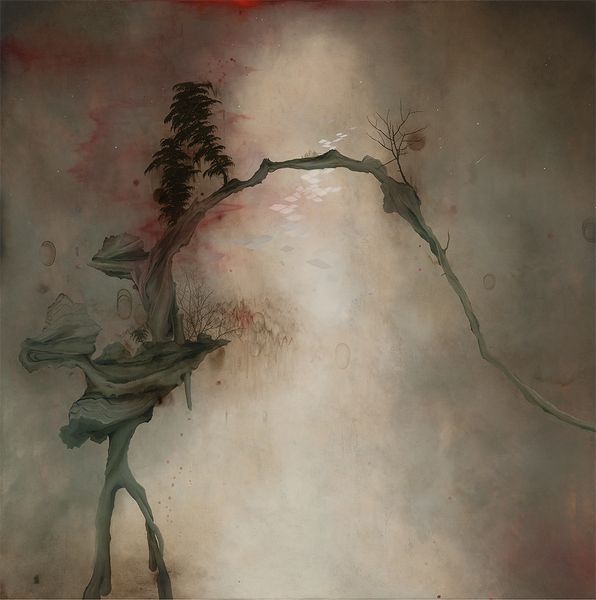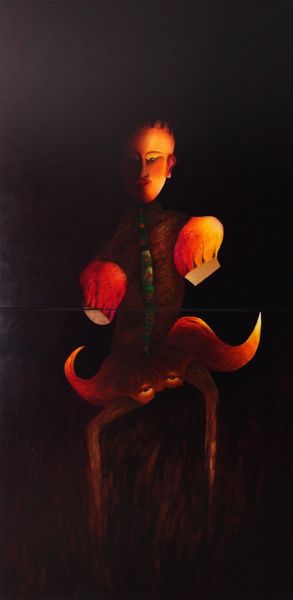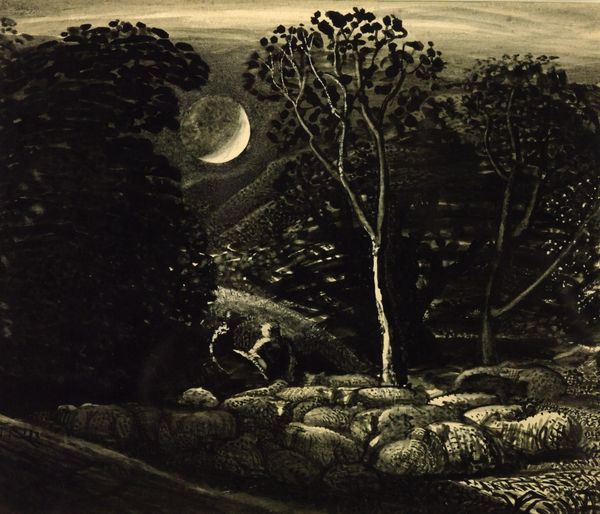
painting, oil-paint, photography
#
still-life
#
contemporary
#
abstract painting
#
water colours
#
narrative-art
#
painting
#
oil-paint
#
landscape
#
figuration
#
photography
#
mixed media
#
watercolor
Dimensions: 140 x 120 cm
Copyright: Marina Pallares,Fair Use
Curator: Looking at Marina Pallares's 2014 piece, "Weaving to the Moon," the immediate sensation is one of quietude. The tones are warm, but muted, and the scene seems to exist somewhere between waking and dreaming. Editor: I agree, there's definitely an oneiric quality, but it’s grounded in quite literal, tangible forms—the structure, the tree… It gives me the feeling of looking at an archeological find, and I find myself wanting to know what types of materials were involved in its creation. Oil on canvas perhaps? I'm wondering if the rough, granular texture in some areas was achieved by mixing sand with the paint. Curator: Considering Pallares' other works, that granular effect, whether or not achieved through specific material processes like that, might have the effect of emphasizing decay or the passage of time, which seems quite central to the painting's themes, if you examine it from the perspective of, say, ruin aesthetics within a historical lens. Editor: That's an interesting way to think of it! To continue our conversation around the means through which Pallares gets across that temporality, look at the actual weaving, like an embroidered, sinuous tightrope that leads to the moon. Is it paint, or something else, actually stitched on the canvas? The texture reads almost like delicate needlework. What does this suggest about the intersection of traditionally "feminine" crafts and fine art production? Curator: And how does this inform her perspective within, or in contrast to, her cohort? Pallares seems to be invoking and challenging institutional boundaries between art forms here, too, using an individual piece to question broader practices and hierarchies of what is ‘high’ and ‘low’ in art. It makes one wonder if a museum context really suits the work, since so much of its meaning is embedded in that challenge to traditional structures. Editor: Agreed, a good point to consider as we think about where we situate the art—I also have to say that now I can’t unsee the tiny human figure. That small detail, juxtaposed with the ladder rising to the moon, brings out the sheer ambition, or even hubris, of human artistic practice, wouldn’t you agree? Curator: Indeed, it complicates any purely melancholic reading, giving it a bit more… bite. It underscores art as aspiration, a defiance against earthly limits that maybe it otherwise wasn’t so direct about! Editor: An interesting point. Thanks for drawing it out, this has changed my initial view quite considerably. Curator: My pleasure. Likewise!
Comments
No comments
Be the first to comment and join the conversation on the ultimate creative platform.
